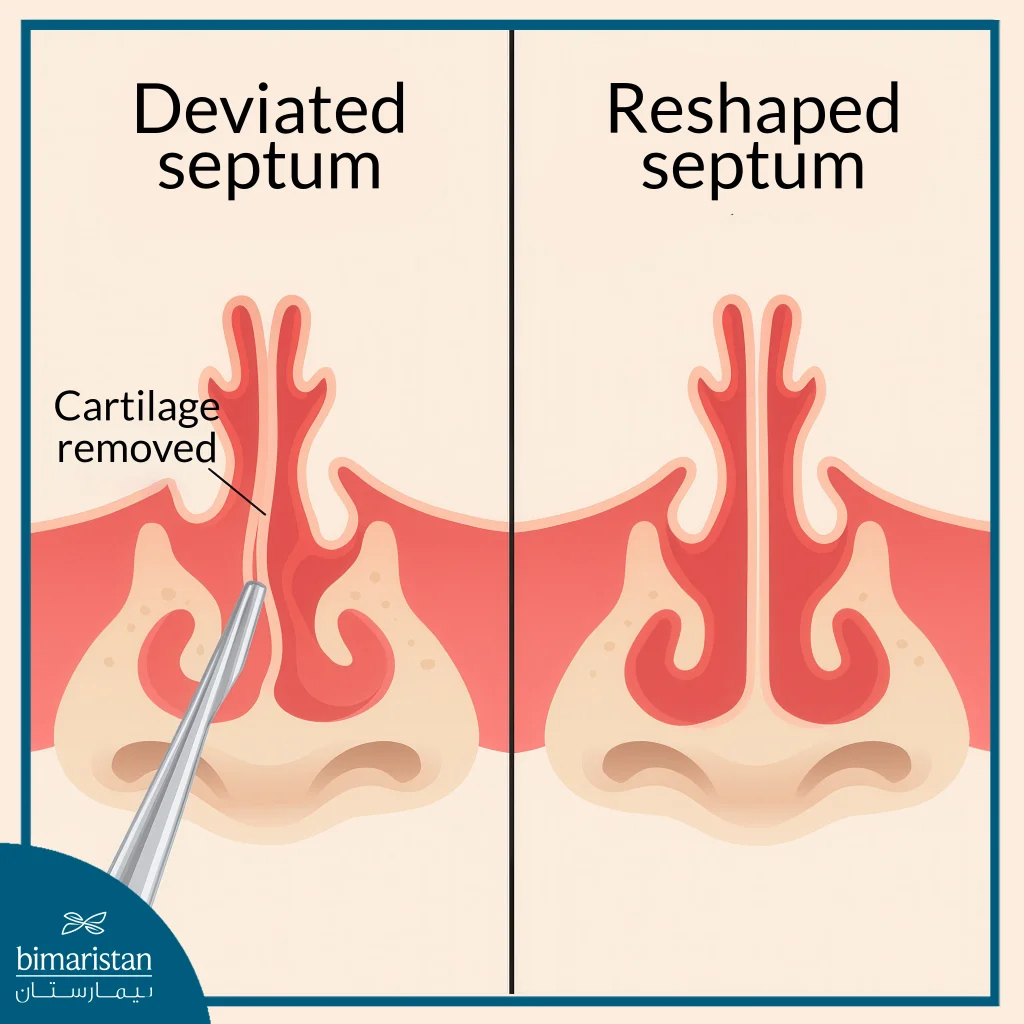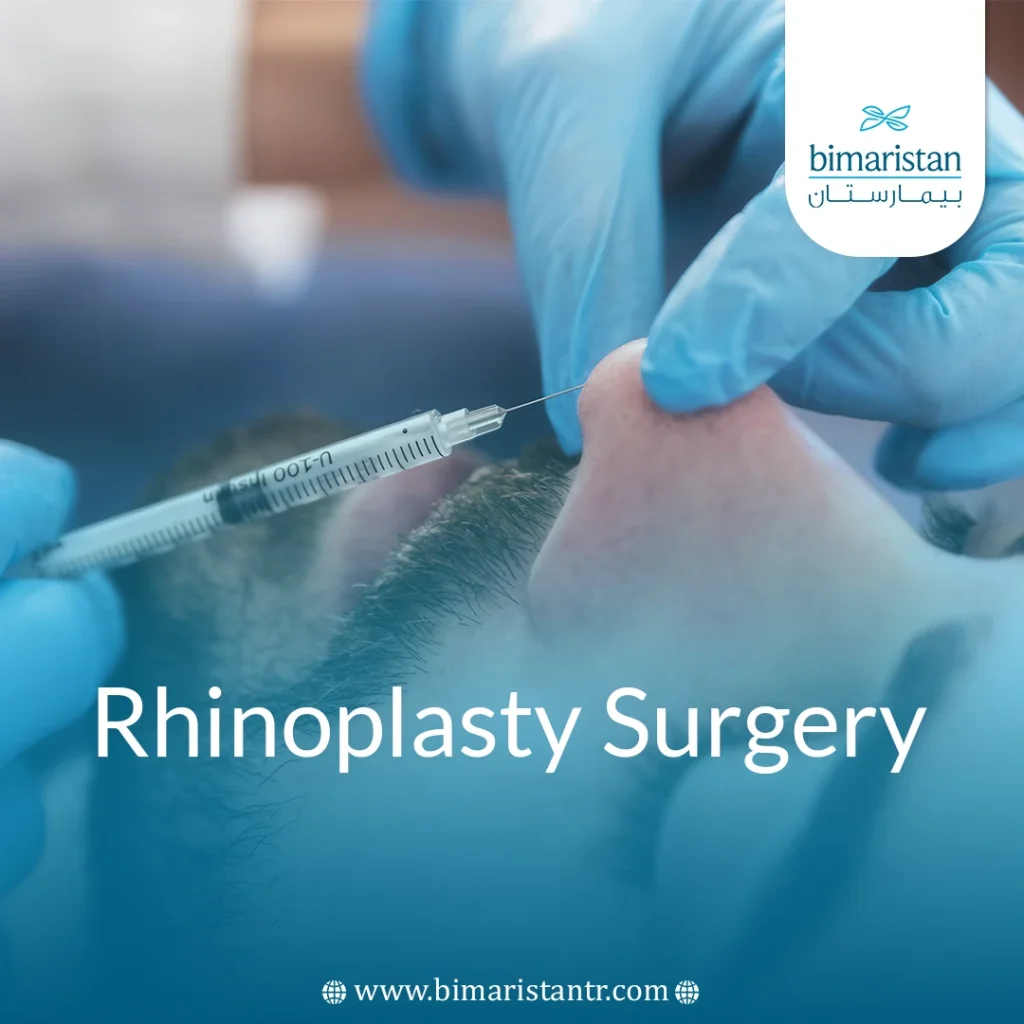Rhinoplasty is one of the most common cosmetic procedures in the world, it started in ancient civilizations such as India and China where doctors used primitive techniques to repair severed or damaged noses, during the Middle Ages some knowledge was transferred to Europe, then witnessed a real renaissance in the nineteenth century with the advent of anesthesia and sterilization, before it evolved to precise techniques and surgical endoscopes in the late twentieth century and until today.
What is rhinoplasty?
Rhinoplasty is a medical procedure that aims to change the shape and size of the nose or improve its function, some people seek rhinoplasty for aesthetic reasons to improve the appearance of their nose and facial symmetry, while others choose surgery to improve the function of the nose and breathing (functional rhinoplasty), these operations are performed by surgeons specialized in plastic surgery or facial plastic surgery, and this procedure is often called a nose job or Nose Job.
Who might need rhinoplasty?
A person may want to have a rhinoplasty to:
- Congenital malformation correction
- The desire to improve the shape of the nose
- Opening blocked nasal passages (such as a deviated septum)
- Repairing facial fractures
- Restoring respiratory function after illness or injury
What is the purpose of rhinoplasty?
The procedure aims to reshape the nose and can be used for a number of things:
- Opening the nasal airway
- Improving the appearance of the nose
- Nasal septum deviation correction
- Correcting birth defects or injuries
- Adjusting the size of the nostrils
- Correcting depressions or bumps on the bridge of the nose
- Nose reduction or augmentation to balance facial features
- Increased self-confidence
What are the types of rhinoplasty?
Nasal cosmetic procedures vary to include surgical and non-surgical techniques, and the choice of the appropriate type depends on the extent of the desired modification, the patient’s health condition, and the structure of the nose, as follows: Types of rhinoplasty:
- Open rhinoplasty: Used for major reshaping of the nose, the surgeon makes an external incision to lift the entire nasal skin, which allows a clear view of the internal structure and high precision in modifying the cartilage and bone, and is effective in correcting severe deformities.
- Closed cosmetology: Used for minor adjustments, closed cosmetic surgery is characterized by no external scars, faster healing, less pain, and less swelling after the procedure.
- Corrects a deviated septum: Used to treat a deviated septum that causes difficulty breathing.
- Non-surgical rhinoplasty (fillers): Temporary fillers are used to fill depressions or modify the shape of the nose without surgery. It requires no anesthesia or surgery, takes only minutes, and the results are immediate.

What is the difference between rhinoplasty and septum surgery?
- Rhinoplasty: Focuses on improving the external appearance and function of the nose.
- Septoplasty: Septoplasty aims to improve breathing function by modifying the nasal septum.
The two procedures can be performed together to simultaneously improve the external appearance and internal function of the nose.
Steps to prepare for surgery
Before performing rhinoplasty, the doctor begins by accurately assessing the shape of your nose using clinical examination and 3D imaging, which helps him plan the required adjustments accurately and customized to your case, before the operation, a set of medical tests such as comprehensive blood tests, and possibly an ECG or radiographs if necessary, in addition to drug allergy testing, to ensure your safety during surgery.
In the days leading up to the surgery, you should adhere to some important instructions, including fasting for 6 to 8 hours before surgery, stopping taking medications that affect blood clotting such as aspirin, and refraining from smoking for at least two weeks because smoking may hinder wound healing and increase the risk of complications.
Post-surgery: Recovery period
After completing the procedure, you will notice significant swelling around the nose during the first week, which is normal and will gradually begin to improve, usually most bruises disappear within ten days, the initial results of the surgery appear after about two weeks, but the final shape of your nose may take 6 to 12 months to complete and appear in the best possible way.
During the recovery period, it is important to sleep on your back with your head slightly elevated to minimize swelling. You should also avoid touching or vigorously cleaning your nose, and refrain from wearing heavy glasses in the first weeks after the operation. Usually, you can return to work after a week to ten days, depending on your condition and the nature of your work.
What are the complications of rhinoplasty?
Although rhinoplasty is relatively safe when performed by an experienced surgeon, there are some complications, including the following:
- Bleeding and infection
- Pain or discoloration
- Allergic reaction to anesthesia
- Change in skin sensation (numbness)
- Altered sense of smell
- Temporary difficulty breathing due to internal swelling or nasal fillings
- Nasal septum perforation
- Poor wound healing or scarring
- Unsatisfactory nasal appearance
Will the patient feel pain after surgery?
The surgeon may use a long-acting anesthetic at the end of the procedure to reduce pain. The pain is usually mild to moderate and goes away within days to a week. You can use over-the-counter painkillers as instructed by your doctor.
The cost of rhinoplasty in Turkey and the Arab world
Rhinoplasty prices vary significantly from one country to another. This disparity in prices reflects differences in health infrastructure, hospital costs, medical staff salaries, as well as factors such as the extent of the spread of advanced plastic surgery techniques. The following table shows the cost of some countries:
| State | Cost (USD) |
| in Turkey | 2000 to 3500 USD |
| Saudi Arabia | 4000 to 8000 USD |
| Emirates | 5000 to 10,000 USD |
What factors affect the cost of the procedure?
There are a number of factors that directly affect the cost of rhinoplasty, including:
- Type of procedure where cosmetic rhinoplasty costs less than functional rhinoplasty
- Type of anesthesia used: Local or general.
- The surgeon’s experience and fame
- Techniques used
- Clinic or hospital level and equipment
- Pre-operative costs and post-operative care
- Tests and analyses accompany the procedure
Features and benefits in Turkey
- Cost: The cost of nose surgery is the most economical option, which makes it attractive to international patients.
- quality: Turkish hospitals have a high level of quality, with many of them being accredited by international bodies.
- Convenience: Many hospitals provide tourist services such as transportation and accommodation, making the patient’s experience easier.
- Experience: Turkey has highly experienced specialized doctors.
Rhinoplasty is an advanced option that combines beauty and function, as it is not only limited to improving the external appearance, but extends to correcting respiratory and health issues that may affect the quality of life, and with the variety of techniques available today between surgical and non-surgical, it has become possible to achieve accurate and satisfactory results with minimal intervention, and Turkey remains one of the most prominent global destinations in this field, where high medical expertise meets affordable cost and integrated services.
Sources:
- American Society of Plastic Surgeons. (n.d.). Rhinoplasty. PlasticSurgery.org
- Johns Hopkins Medicine. (n.d.). Rhinoplasty: Nose reshaping. Johns Hopkins Medicine
- National Health Service (NHS). (n.d.). Nose reshaping (rhinoplasty). NHS
